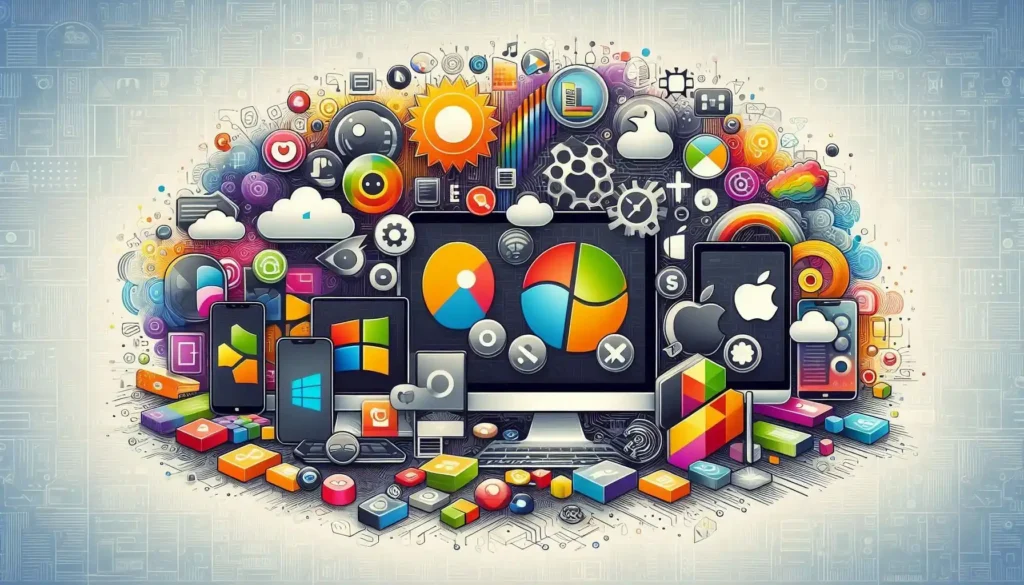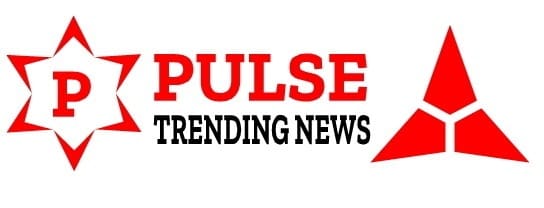
Navigating the Digital World: A Deep Dive into the Top 5 Operating Systems
In today’s hyper-connected world, you are constantly interacting with technology. Whether you’re checking your emails, streaming your favorite show, or working on a critical project, you’re relying on a silent yet powerful force working behind the scenes – the operating system. Think of it as the conductor of an orchestra, harmonizing all the different parts of your device to create a seamless and functional experience. But with a variety of operating systems vying for your attention, choosing the right one can feel like navigating a complex maze.
This article is your guide to understanding the top 5 operating systems that dominate the digital landscape today. We’ll explore each one, dissecting their advantages and disadvantages, so you can make an informed decision about which system best suits your needs and preferences. Let’s embark on this journey of discovery together and unravel the intricacies of these essential software giants.
1. Microsoft Windows: The Ubiquitous Giant
Windows, by Microsoft, needs little introduction. Chances are, you’ve encountered it at work, at home, or in public spaces. It’s the most widely used desktop operating system globally, a testament to its long history and broad compatibility. From its humble beginnings as a graphical extension for MS-DOS to its current iteration, Windows has evolved significantly. It’s become synonymous with personal computing for many, offering a familiar interface and a vast ecosystem.
Advantages of Windows:
- Unmatched Software Compatibility: This is arguably Windows’ strongest suit. The sheer volume of applications, games, and software designed for Windows is unparalleled. From industry-standard professional software like Adobe Creative Suite and AutoCAD to countless games and everyday productivity tools, you’ll find it running seamlessly on Windows.
- User-Friendly Interface: Windows has consistently strived for user-friendliness. Its graphical user interface (GUI) is intuitive, making it easy for both tech novices and seasoned professionals to navigate. Features like the Start Menu, Taskbar, and File Explorer are familiar and straightforward.
- Extensive Hardware Support: Windows boasts broad compatibility with a vast range of hardware components. Whether you’re building a custom PC or buying a pre-built system, you’ll find readily available drivers and support for almost any peripheral you can imagine, from printers and scanners to the latest graphics cards and VR headsets.
- Gaming Powerhouse: For gamers, Windows is often the operating system of choice. DirectX, Microsoft’s suite of multimedia technologies, is deeply integrated into Windows, providing a strong foundation for high-performance gaming. Most PC games are developed with Windows compatibility as a primary focus.
- Large Community Support: Due to its massive user base, finding help and support for Windows is relatively easy. A vast online community, countless forums, and readily available technical support from Microsoft and third-party vendors ensure you’re rarely alone when troubleshooting issues.
Disadvantages of Windows:
- Cost: Windows is a proprietary operating system, meaning you need to purchase a license to use it legally. This cost can be significant, especially for multiple devices or professional versions.
- Security Concerns: Windows has historically been a target for malware and viruses. While Windows Security has significantly improved in recent versions, its popularity still makes it a prime target for cyber threats. You’ll need to be vigilant and likely invest in third-party antivirus software for robust protection.
- Resource Intensive: Windows can be resource-heavy, particularly older versions or when running multiple applications. It can demand significant RAM and processing power, potentially slowing down older or lower-spec machines.
- Privacy Concerns: Microsoft collects a substantial amount of user data for telemetry and personalization purposes. While you can adjust privacy settings, the default configurations often raise concerns about data collection and user privacy.
Windows: Pros and Cons at a Glance
| Feature | Advantages | Disadvantages |
| Software | Extensive Compatibility, Wide range of apps | Can be expensive due to proprietary nature |
| User Interface | User-friendly, Intuitive, Familiar | Can feel bloated or complex to some |
| Hardware | Broad Compatibility, Extensive support | Can be resource intensive |
| Gaming | Excellent Gaming Platform, DirectX integration | |
| Support | Large Community, Readily available support | Security vulnerabilities, Privacy concerns |
| Cost | Wide range of hardware options | Requires license purchase, potentially expensive |
2. macOS: The Apple Ecosystem Champion
macOS, formerly known as OS X, is Apple’s desktop operating system, exclusively designed for their line of Mac computers. Known for its sleek design, user-friendliness, and robust performance, macOS is a favorite among creative professionals, students, and anyone who values a polished and integrated computing experience within the Apple ecosystem.
Advantages of macOS:
- User-Friendly and Intuitive: macOS is renowned for its elegant and intuitive interface. From the Dock to Finder, navigating macOS is often described as seamless and enjoyable. It prioritizes simplicity and ease of use, making it accessible to users of all technical levels.
- Strong Security: macOS is generally considered to be more secure than Windows. Built upon a Unix-based foundation, it benefits from inherent security features and Apple’s rigorous security practices. While not immune to threats, macOS experiences fewer malware attacks compared to Windows.
- Performance and Stability: macOS devices are known for their smooth and stable performance. Apple’s tight control over both hardware and software allows for deep optimization, resulting in efficient resource utilization and reliable operation.
- Ecosystem Integration: macOS is seamlessly integrated within the Apple ecosystem. Features like iCloud, AirDrop, Handoff, and Continuity create a fluid experience across your Mac, iPhone, iPad, and other Apple devices.
- Design and Aesthetics: Apple places a strong emphasis on design, and macOS reflects this philosophy. The operating system is visually appealing, with a clean and consistent aesthetic across its interface and applications.
- Pre-installed Apps and Utilities: macOS comes pre-loaded with a suite of powerful and user-friendly applications, including Safari, Mail, Calendar, iMovie, GarageBand, and Pages. These apps are well-integrated and often sufficient for everyday tasks and creative projects.
Disadvantages of macOS:
- Cost and Hardware Lock-in: macOS is exclusively available on Apple hardware, which is generally more expensive than comparable Windows PCs. You are locked into the Apple ecosystem if you want to use macOS, limiting your hardware choices.
- Limited Hardware Compatibility: While macOS supports a wide range of peripherals, its hardware compatibility is not as broad as Windows. You might encounter compatibility issues with certain older or less common hardware devices.
- Less Gaming Options: While gaming on macOS is improving, the selection of games available for macOS is significantly smaller compared to Windows. Many AAA titles are developed primarily for Windows, and macOS gaming often lags behind.
- Closed Source and Less Customization: macOS is a closed-source operating system, meaning its source code is not publicly available. This limits customization options compared to open-source systems like Linux.
macOS: Pros and Cons at a Glance
| Feature | Advantages | Disadvantages |
| Software | Well-integrated apps, Polished app ecosystem | Limited software choices compared to Windows |
| User Interface | User-friendly, Intuitive, Elegant | Can be less customizable than some other OSs |
| Hardware | Optimized for Apple hardware, Stable performance | Hardware lock-in, Limited hardware choices, Higher cost |
| Gaming | Improving, Quality games available | Smaller game library compared to Windows |
| Support | Excellent Apple Support, Strong ecosystem support | Less hardware compatibility than Windows |
| Cost | Pre-installed apps can be cost-saving | Higher upfront cost of Apple hardware |
3. Linux: The Open-Source Powerhouse
Linux is not a single operating system but rather a family of open-source operating systems based on the Linux kernel. Its open-source nature, flexibility, and stability have made it a cornerstone of the internet, powering servers, supercomputers, embedded systems, and increasingly, desktops and laptops. Distributions (distros) like Ubuntu, Fedora, Debian, and Mint cater to various user needs, from beginners to seasoned developers.
Advantages of Linux:
- Open Source and Free (Mostly): Linux is open source, meaning its source code is freely available, and you can modify and distribute it. Most Linux distributions are free of charge, although some commercial distributions exist. This makes Linux a highly cost-effective option.
- Customization and Flexibility: Linux offers unparalleled customization. You can tailor almost every aspect of the operating system, from the desktop environment to the kernel itself. This flexibility makes it adaptable to diverse needs and preferences.
- Security and Stability: Linux is renowned for its security and stability. Its open-source nature allows for community-driven security audits and rapid patching of vulnerabilities. Linux systems are generally robust and less prone to crashes and malware compared to some other operating systems.
- Performance Efficiency: Linux is known for its efficiency and low resource consumption. It can run smoothly on older hardware and handle demanding workloads with minimal overhead.
- Strong Community Support: The Linux community is vast, active, and incredibly helpful. You’ll find extensive documentation, online forums, and communities dedicated to various distributions, providing ample support and resources for users of all levels.
- Variety of Distributions: The diversity of Linux distributions is a major strength. You can choose a distro that aligns perfectly with your needs, whether it’s for desktop use, server administration, development, or specific tasks.
Disadvantages of Linux:
- Steeper Learning Curve (Potentially): While user-friendly distributions like Ubuntu have made Linux more accessible, the initial learning curve can still be steeper compared to Windows or macOS, especially if you’re unfamiliar with command-line interfaces and open-source concepts.
- Software Compatibility (Can Be Limited): While the software ecosystem for Linux has grown significantly, it still lags behind Windows in certain areas, particularly for proprietary software and some commercial applications. However, excellent open-source alternatives and compatibility layers like Wine are available for many Windows applications.
- Hardware Compatibility (Can Be Challenging): While Linux hardware compatibility has improved drastically, you might still encounter compatibility issues with certain niche or very new hardware, especially if drivers are not readily available.
- Gaming (Improving but Still Behind): Gaming on Linux has made significant strides with projects like Proton and Steam Play, enabling many Windows games to run on Linux. However, the overall gaming library for Linux is still smaller than Windows, and compatibility can vary.
Linux: Pros and Cons at a Glance



